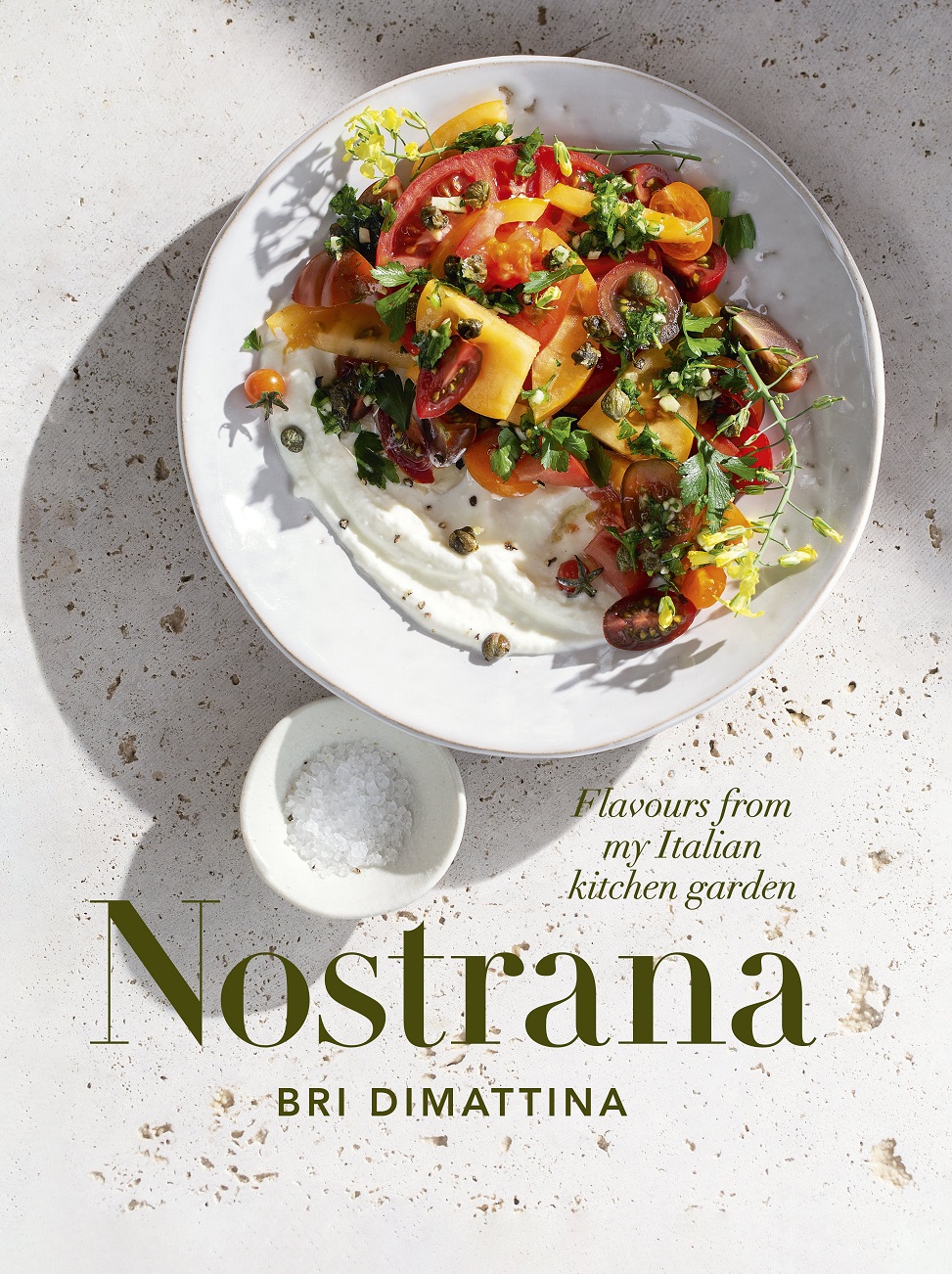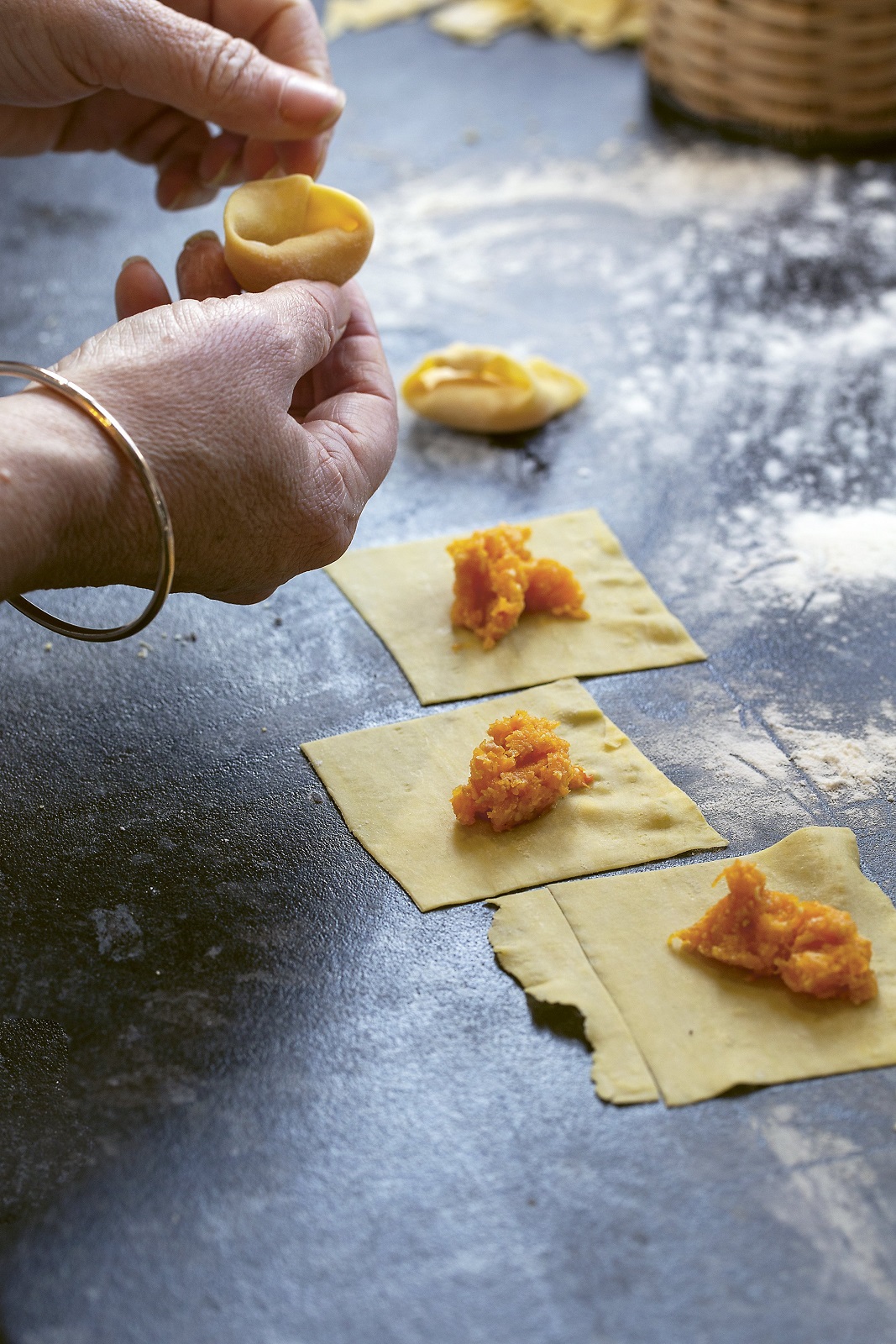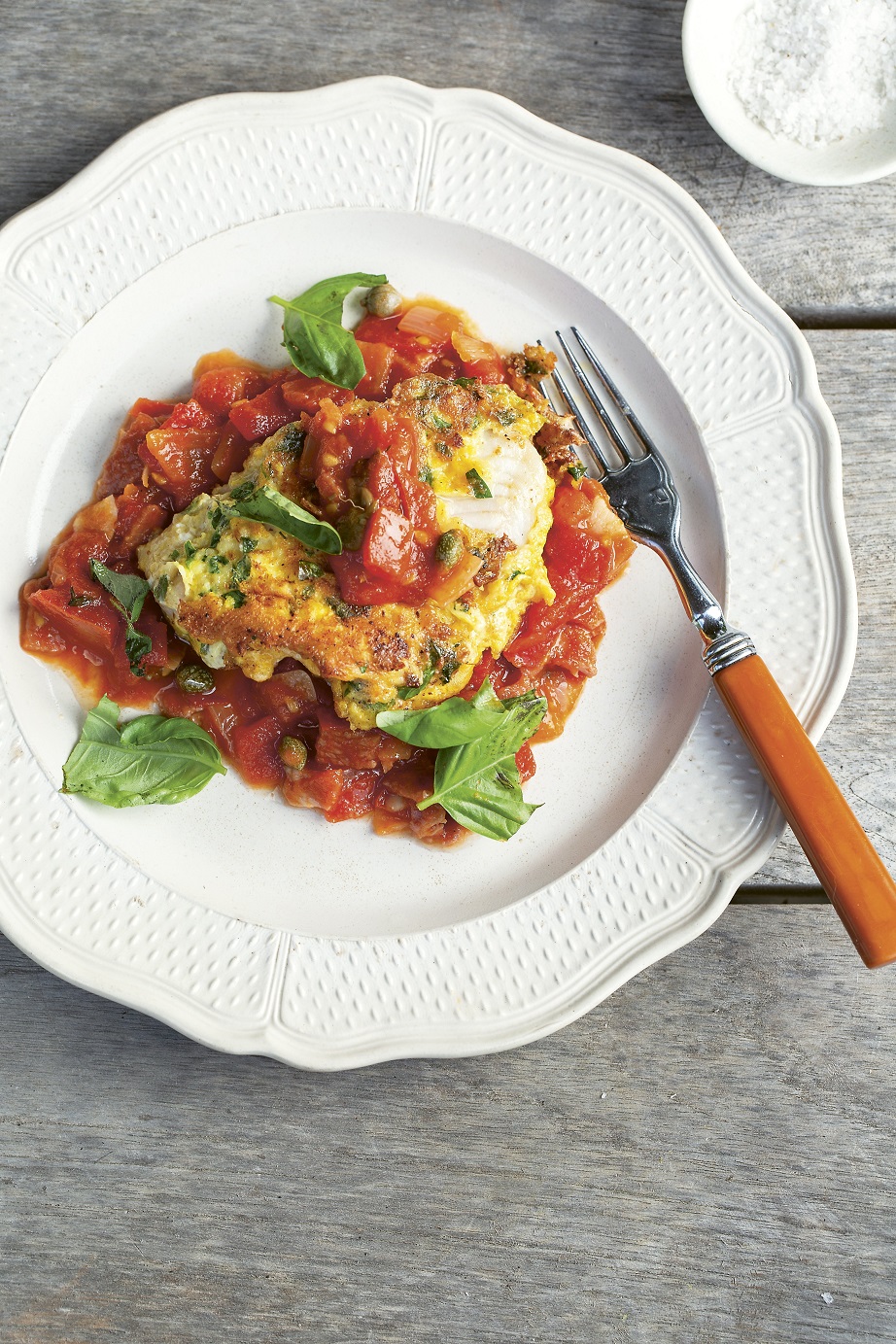
I didn’t realise that I even had a love of food until I was old enough to notice that others didn’t think about food as much as I did! I’ve always been interested in new flavours and new recipes — so it was really an environment that I grew up in — picking fresh boysenberries in the summer near Nelson, some of the menus that my mother would create for her café — I was around it all the time — that curiosity has translated to the garden... How hard is something to grow — and then, of course, I find a way to incorporate it into our meals.
How has your Italian heritage reflected in what you do?
Definitely my love of pasta, and simple fresh seasonal flavours. Most of my favourite recipes are very simple Italian dishes — often only five or six ingredients — the pairings of what naturally grows together — basil and tomatoes — grow well together in the garden and translate to being partners in the kitchen. I have noticed that most about Italian heritage — and some of the more traditional Italian meals that I enjoy.
Was a career in food inevitable for you?
Not consciously, but I’ve always been drawn back to it in some form. I do wish that mucking around in my garden and kitchen for days on end could be a career!
What has been the highlight of your career so far?
In 2014 I won the Champion Home-crafted Cheese and Cheesemaker award from the New Zealand Specialist Cheese Association, with a ricotta recipe from Nonna’s recipe book. I’d been making it for years to use as a ravioli filling and decided to see how it rated in real terms. My other cheeses would place as silvers and bronzes, and I think my mascarpone has been cheated, but maybe one year soon I’ll tweak the recipe a little and see what happens.
What has been the biggest challenge in moving to Māngere Bridge and starting your food forest?
Initially, I was sneaking edible plants in all over the property without my partner noticing. It’s the gardener version of hiding a new pair of shoes in the closet — "I’ve had it for years" or "its wild". Although the early stages of being spray-free were also hard, because at beginning point I didn’t have the help of the whole ecosystem. I had to wait for the predators like the pīwakawaka and the tauhou to arrive and nest in the trees before my aphids disappeared. These days the birds follow me around the veg patch, which is amazing, now — I don’t enjoy sharing my tomatoes and figs with the birds, though.
What do you like most about your garden?
The peacefulness. I could muck around all day down the bottom of the garden with one little task leading to another, planning in my head what I should put where. But I also love the feeling at dinnertime of going down to the veg patch to grab a handful of beans or a tomato, and a couple of sticks of rhubarb for breakfast.
What is your favourite vege/fruit to grow and then eat?
Probably tomatoes. A homegrown tomato tastes so good and is completely different from supermarket-bought. I love asparagus, too. If I ever had to start another garden, asparagus would be the first thing I would plant. Fresh-picked they taste almost like a sugarsnap pea – delightfully sweet, juicy and crunchy, really delicious eaten raw, straight from the garden. They’re so simple to grow with no real pests or diseases, and they pop up every year for a decade without any extra work. Asparagus ticks a lot of boxes for me.
What do you get from growing and cooking your own food?
Joy and flavour. A lot of my recipes are really simple, because fresh fruit and veg from the garden are already bursting with flavour.
What is your favourite dish to cook and eat?
This is such a tough question, but it has to be the first of the season of anything: first strawberries of the season, first asparagus of the season, first Bluff oysters of the season, first cherries, and so on.
On a busy weeknight what is your go-to dish to cook?
Pasta. I’m not big on preserves, but I do make large slow-cooked batches of pasta sauce and freeze them in portions, so that I have a 10-minute, from-scratch comfort-food dinner. The same goes for goes for pesto.
What won't you eat?
Weet-Bix. It’s incredibly un-Kiwi of me but I just can’t.
If you had guests for dinner what would you most likely serve?
Pizza Dolce, a sweet and creamy, chocolatey and cinnamoned dessert from my Nonna’s recipe book. This recipe is so coveted that it almost didn’t make it into my book. Even when I’m the guest for dinner, I make it to take to friends’ places and then try to find a polite way to take some home for with coffee the next morning.
Is there one tip your Italian Nonna taught you that you'll never forget?
Always try new food. She said,‘If you think you are not going to like something, then have a piece of something else that you do like ready to eat straight away.’ What I carried forward from that was putting a delicious morsel to the side of my plate as a last mouthful of a meal.
What are your tips for others who would like to do a similar thing?
Honestly, just start, and start small. Choose just one or two things that you love to eat and start with those. Try to avoid buying a whole veg patch of different plants. It's too much to learn in one go, because each plant has a different set of ‘do’s and don’ts’. Once you’ve got a couple of items growing well in your garden, add another couple and learn as you go.
 The Book
The Book

Images and text from Nostrana by Bri Di Mattina. Photography by Lottie Hedley. Published by HarperCollins NZ. RRP $55
 Butternut Cappellacci
Butternut Cappellacci

Cappellacci is similar to tortellini, though a little easier. Instead of cutting the pasta sheet into little rounds before you fill them, you make little squares of pasta. The little triangle caps left on the pasta help me to remember its name. This is a great recipe to make extra of. Freeze the uncooked cappellacci on a tray, then transfer to a bag once frozen. This stops them clumping together. They’ll take about 6 minutes to cook from frozen. I love the browned butter and sage combination with pumpkin and it is seasonally ideal, because the pumpkin and sage are ready in the garden at the same time.
Serves 4
Ingredients
500g butternut pumpkin, halved, seeds discarded
2 tsp olive oil
80g finely grated parmesan
2 Tbsp fine breadcumbs
Pinch of ground nutmeg
Pasta dough (see recipe)
Browned butter & sage sauce
80g butter
Handful of sage leaves (about 20, or more)
½ tsp lemon juice
Method
Preheat the oven to 200degC fan-forced. Brush the cut side of the pumpkin with oil and season with salt and pepper. Place in a roasting pan cut-side down and cook for about 40 minutes, until the pumpkin is tender and the skin is soft. Set aside to cool, then remove the skin. Mash the pumpkin in a bowl with the parmesan, breadcrumbs and nutmeg. Season to taste.
Roll the dough as directed (recipe right), finishing at the second last setting. Cut the dough into 7cm squares. Place a little pumpkin filling into the centre of each square. Moisten the edges with water then fold over to form a triangle. Press the dough together around the filling and try to avoid any trapped air bubbles. Bring the two furthest corner points together and press together to create a little ring. Place on a floured tray until you are ready.
Bring a large saucepan of salted water to the boil. Cook in batches for 2-3 minutes, until al dente.
While they are cooking, to make the sauce, heat the butter in a large pan, until melted and starting to brown slightly. Add the sage leaves and cook until crisp. Stir in the lemon juice.
Add the cooked cappellacci and gently toss together. Serve immediately.
Pasta
The thing about pasta, in my family at least, is that it is the number one way to eat less meat. They truly don’t seem to notice when I’ve combined fresh homemade pasta with garden goodies, such as peas and parmesan or tomato and anchovy, or even something as simple as basil pesto tossed with cracked pepper on top.
Serves 6
Ingredients
4 cups (600g) 00 flour
5 eggs
½Tbsp olive oil
Method
Place the flour into a mound on the bench and make a well in the centre. Add the eggs and olive oil. Using a fork (or by hand) slowly start to mix the eggs and oil, incorporating the flour on the inside of the mound.
The dough will slowly start to come together. Once the flour has all been incorporated, start kneading the dough with the heel of your hand. If it is sticky, add a little flour to the bench and continue to knead for a good 10 minutes. The dough should be soft, elastic and just a little sticky.
Cover with a damp cloth and let it rest for 30 minutes. Cut the dough into 8 pieces. Shape 1 piece into a rough rectangular shape and dust generously with flour. Starting on the widest setting of the rollers on the pasta machine, feed the dough through. Fold into thirds and feed it through again the other way (starting at the shortest side). Do this a couple of times, dusting with flour as necessary.
Change to the next setting on the pasta machine, and roll the dough through. Change to the next setting and roll again, without folding. Keep rolling, reducing the setting each time and finishing at your desired thickness (it will depend on how you are going to use the pasta). Repeat with the remaining dough and cut into desired shapes.
 Tomato caper sauce with parmesan fish
Tomato caper sauce with parmesan fish

This sauce is essentially a cooked salsa to serve on fish, chicken or even beans, rather than as a pasta or pizza sauce (although go right ahead!). It’s a summer flavour bomb and goes with everything. Most memorable for me growing up was this sauce served on blue cod, so that’s what I’m giving you here. If you like, make a bigger batch of the sauce and keep it in the fridge or freezer to have on hand for a quick meal.
Serves 4
Ingredients
Plain flour, for dusting the fish
4 blue cod fillets
3 eggs
¼ cup (60ml) milk
Chopped fresh herbs (such as parsley, thyme or oregano), to taste
½ cup (40g) finely grated parmesan
Butter or olive oil, for frying
Tomato caper sauce
2 Tbsp olive oil
1 onion, finely chopped
2 slices pancetta or streaky bacon
4 large tomatoes, chopped
5 garlic cloves, crushed
1 tsp lemon zest
½ tsp paprika
¼ tsp cayenne pepper, optional
2 Tbsp tomato paste
1 cup (250ml) water
1 cup (250ml) white wine
1 cup combined oregano and parsley leaves, finely chopped
100g butter, chopped
¼ cup (50g) capers
Method
To make the sauce, heat the oil in a large, deep frying pan over medium-high heat. Add the onion and cook until translucent, then add the pancetta and cook until crispy.
Add the tomatoes, garlic and lemon zest. Cook for a few minutes, until the tomatoes have reduced down a little, then add the spices, tomato paste, water, wine and half the herbs. Simmer for about 10 minutes, until it thickens. Add the butter and stir until melted and combined.
Remove from the heat and add the remaining herbs and capers (if you want, you could fry the capers in a little butter until crispy first).
Season with salt and pepper to taste and set aside.
Season the flour with salt and pepper then use to lightly dust the fish. I do this by placing a few tablespoons of seasoned flour to a bag, then adding the fillets and shaking gently to coat evenly.
In a shallow bowl, lightly whisk the eggs and milk together, then stir in the herbs and parmesan.
Heat the butter or olive oil in a large frying pan over medium heat.
Dip the fillets into the egg mixture and place into the pan (you may need to spoon a little of the herbs and cheese left in the dish on top of them). Cook for about 5 minutes each side, until lightly golden brown and just cooked through.
Reheat the sauce and serve with the fish on top.
NOTE: You could swap the blue cod for monk fish, or talk to your fishmonger for other alternatives.
 Spiced apple cake
Spiced apple cake

This recipe hails from my mother’s cafe, Eliza’s Pantry. It’s super simple and uses four apples with their skin on. The apples don’t have to be at their best, it’s a little like a banana bread recipe for apples. They can be rescued because no-one is inclined to eat them, and turned into something delicious but the best part is that it is all just mixed up in a food processor then baked.
Serves 12
Ingredients
4 apples, quartered, cored, but not peeled
2 eggs
2 cups (440g) sugar
2 tsp bicarbonate of soda
2 tsp ground allspice
250g butter, at room temperature, chopped
2 cups (300g) plain flour
1 tsp ground cinnamon
Ice cream and caramel sauce, to serve
Cinnamon crumble
½ cup (110g) brown sugar
½ cup (45g) rolled oats
1 tsp ground cinnamon
25g butter

Preheat the oven to 180degC fan-forced. Grease a 23cm springform tin and line with baking paper.
To make the crumble, combine the ingredients in a food processor and process until crumbly. Transfer to a bowl and set aside.
For the cake, place the apples into the food processor and process until finely chopped.
Add the remaining ingredients and process for 1 minute.
Pour into the prepared tin and sprinkle with the topping.
Bake for 1-1½ hours, until a skewer inserted into the centre comes out clean. Cool in the pan for 10 minutes, then transfer to a wire rack to cool completely.
Serve with ice cream, caramel sauce, or both.












